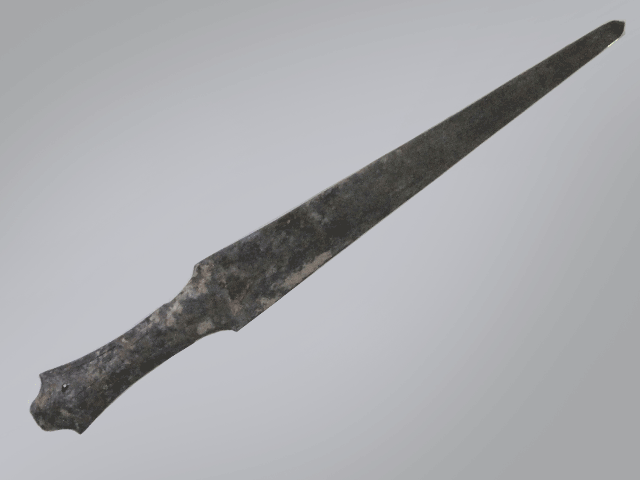<![CDATA[On July 2nd an eleven year old boy in China's Jiangsu Province was washing his hands in a local river when he felt something hard and metallic touch his hand. He took the strange object out of the water, and found it was a rusty metal sword. The little boy, Yang Junxi, took the sword home to his father, Yang Jinhai, who spread the news around his neighbourhood. Upon hearing the news, people from around the town as well as further a field, flocked to the Yang home and offered them high prices to buy the rare artefact. Despite these offers, Jinhai sent the sword to the Gaoyou Cultural Relics Bureau on September 3rd. Jinhai told the local news agency that he knew it was illegal in China to sell cultural artefacts. The bureau rewarded him for bringing the relic to them. Upon further investigation, the sword was found to be more than 3,000 years old. This is interesting as the first bronze swords were developed 3,200 years ago, meaning that this sword is likely to have been one of the first swords ever made. A team of cultural relic experts examined the 26cm long sword. It is a short sword, suggesting it wasn't designed for combat purposes. The age of the sword means it was created during the time of the Shang and Zhou dynasties. Sword making began in about 1200 BC, and neared its zenith during the Qin Dynasty, which lasted from 221 BC to 207 BC. During this time sword makers mixed tin and bronze, with up to 20% tin. This differed from other cultures, which used about 10% tin to make their swords flexible, but easier to break. Bronze alloy swords continued to dominate the Chinese market until the early Han Dynasty, when sword makers started to use iron instead of bronze. China was actually the last place to manufacture swords from bronze. The owner of the bronze sword would have been a man of influence, as it was made during a time before swords were mass produced. There were no decorative or unique patterns found on the sword with which to identify its owner. According to the Relics Bureau, the short length of the sword means that it was meant as a status symbol. It had both a practical and decorative function, but was not built in a way to be suitable for military use. The sword is not the only interesting artefact found in the region in recent times - a bronze instrument has been found in the nearby town of Sanduo. The sword may have resurfaced recently due to dredging efforts in the Laozhoulin River where it was found. The river crosses the ancient Han Ditch, the predecessor to China's Grand Canal, which is the world's longest artificial waterway. The waterway was recently entered into the UNESCO World Heritage list. Because of the Yang discovery, the government is looking to do further archaeological excavations around the river area in the hope of finding more artefacts the dredging may have bought to the surface. ]]>
Ancient Sword Discovered by Chinese Boy
